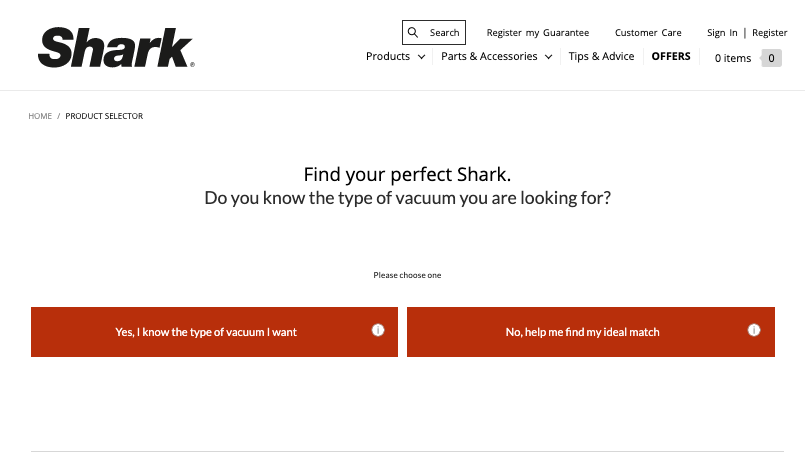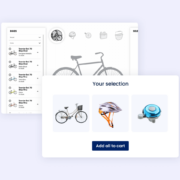As Google Chrome prepares to phase out the third-party cookie by 2024, marketers are scrambling to find new ways to provide a personalized e-commerce experience while ceding to consumers’ data privacy concerns.
Before, marketers used third-party cookies to track an individual’s browsing activity across a variety of third-party web domains, which enabled retailers to retarget ads to web visitors even after they leave the retailer’s website. Advertisers used web browsing data gathered from cookies—plus data from external sources such as credit bureaus, data brokers, and census databases—to assemble a profile of that user’s behavior online and serve them with even more targeted ads. However, this method not only annoyed consumers—it invaded their privacy, leading to what is known in the ad tech industry as “surveillance capitalism.”
The obsolescence of the third-party cookie is forcing marketers to pivot from nonconsensual cyberstalking to building one-on-one relationships with customers to glean their preferences—and even then, only if the consumer expressly opts in. Companies must help consumers specify what data they’d like to share, state how the data will be used, and offer controls to let consumers adjust their preferences.
How a cookieless future will impact e-commerce
Without third-party cookies and the ease of identifying new versus returning users, e-commerce professionals must rethink their strategies for ad retargeting, cross-channel attribution (tracking the impact of individual touchpoints), and measuring ad impressions. In one survey, 49% of industry professionals listed cookie deprecation as their top media challenge in 2021.
In reality, marketers will still be able to display personalized ads, but they won’t target individual users. Google’s industrywide Privacy Sandbox initiative—described as “a secure environment for personalization that also protects user privacy”—means advertisers who use the Google Ads platform can display ads to cohorts of anonymized users with similar interests or behaviors. Those cohorts will be created with Google’s FLoC (Federated Learning of Cohorts), an API that Google intends to use as a Chrome extension. Behavioral targeting is still possible, but instead of tracking user sessions, anything a user does on a website—such as scrolling or clicking on a call-to-action—registers as an “event” that conceals the user’s identity while allowing advertisers to target them for certain behaviors, such as shopping cart abandonment.
Conversational search and the future of cookieless e-commerce
The onus is now on organizations to create value propositions that entice customers to willingly share their data, knowing they will receive something in return—what Sai Koppala, chief marketing officer at SheerID calls “invited personalization.” Data gathered directly from customers allows retailers to understand them at a deeper level.
This is known as zero-party data or declared data. Zero-party data elaborates on aspects of a customer’s identity such as their life stage, profession, and the social groups to which they belong. Organizations can gather zero-party data from a variety of touchpoints, such as social media, SMS, email, surveys, CRM systems, and even point-of-sale (POS) systems.
Here’s where product discovery becomes essential. Instead of foisting a dry questionnaire on your customers when they arrive on your website, product discovery initiates a dialogue via chat by asking click-based questions in a conversational format to deduce a consumer’s interests. Traditionally, retailers have shied from asking customers too many questions for fear of creating friction, but data shows that product discovery boosts engagement by 80%.
The key is to position data sharing as a valuable exchange with a clear outcome for the customer. Online travel provider Cheap Caribbean offers healthcare workers the chance to join the ER&R Club to access exclusive deals. Customers willingly provide proof that they’re a doctor, nurse, or other medical professionals to qualify for the offer. Meanwhile, the lingerie brand ThirdLove provides shoppers with personalized recommendations based on their measurements. According to Forrester, 57% of consumers would share data in exchange for personalized offers.
Search Assistants
AI-powered personal shoppers and conversation-based recommendation engines are two examples of conversational marketing automation. E-commerce brands can program a bot to chat with customers, which triggers a data feedback loop that enables marketers to hone their ad targeting strategy.
Product finders
Product quizzes enable new customers to self-identify their preferences in order to receive personalized recommendations. For example, first-time visitors to SharkClean’s website are greeted by the site’s product selector. The first question is: “Do you know the type of vacuum you are looking for?”

These finders also referred to as product advisors or quizzes, are a valuable source of data for businesses as they provide training data to the recommendation algorithm and business intelligence to other areas of business operations, such as inventory management.
Special offers
Many brands extend discounts to customers in exchange for their email address. Special offers can also be tied to other types of information sharing, such as asking the user to identify their age group or other data point in exchange for a one-time discount.
Loyalty programs
Most loyalty programs require customers to consent to ongoing data sharing. This is so that the brand can target them and other users like them with personalized offers in exchange for their brand loyalty.
Behavioral triggers
Another way to initiate a conversation with customers is to tie the outreach to certain behavioral triggers. For example, if a customer adds an item to their ‘Favorites’ list without buying or browses a number of knowledge articles consecutively, you can ask if they need help with their purchase.
Letting bots ask qualifying questions on behalf of your sales reps moves leads to the next stage of the buying cycle. Bots can also identify who isn’t ready to purchase and direct them to knowledge articles or other collateral while escalating warm leads to sales reps.
With conversational AI, your website no longer feels like a soulless storefront but a place where buyers and sellers meet to trade!
Intelligent site search
Intelligent site search is a strategy for optimizing search results on your website based on the context provided by the user. Natural language processing enables search engines to understand linguistic nuances, jargon, and synonyms, with the goal of understanding user intent.
Intelligent site search has the potential to yield high returns: content relevance grows as customers interact with the site, leading to more accurate search results. This means brands won’t lose a sale just because their internal naming conventions don’t match the keywords customers use to search for a specific item.
For example, without intelligent site search, a customer who searches for “tennis shoes” won’t find any search results if the internal database lists the product under “sneakers.” Contextual search also ranks search results according to user intent. A customer who types “violin maintenance” into a search box is probably looking for information rather than a product, whereas the term “violin maintenance kit” implies purchase intent.
Social chat integrations
Information-gathering chatbots should not only live on your website; they should be integrated into your social media platforms. Customers already use platforms like Facebook Messenger and Whatsapp to communicate with friends and family, so sharing information with a business comes more naturally in these environments.
How to get it right
Use artificial intelligence
Using AI is essential as it enables you to recognize patterns in your search data, analyze user sentiment in chats, and cluster users into cohorts based on their usage patterns or interests. AI-powered recommendation engines improve their understanding of natural language as they interact with more users and deliver increasingly accurate predictions to returning users, thereby rewarding customers for sharing information with your brand.
Drive the visibility of product discovery
Put product discovery front-and-center. Greet customers when they arrive on your website; make sure your opening question is relevant to a new versus returning user. Program in short-answer canned responses so the customer can choose from a menu of options if they don’t know what they’re looking for.
If you feature a product recommendation assistant on your site, program it to pop up when the customer arrives on your homepage. However, you should also give users the option to opt-out—perhaps they want to browse your site before taking the quiz. Either way, make it easy for customers to start a conversation with your brand.

